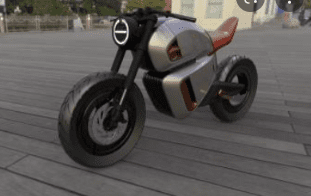Despite the issues affecting the industry, which we’ve covered in some of our more recent pieces -see our original State of the Industry piece and our most recent update on the state of the industry-, there is a huge amount of optimism in the ebike space. This optimism is rising from every corner of the industry, from the designers right through to ebike owners and proponents.
But, what is it that is making many of us look to the future with so much optimism? And, maybe more importantly, what does the ebike of the future look and feel like? We’re not saying we have all the answers, but, seeing as we’re one of the fish in the pond, we do have an idea or two about the future of ebikes.
THE FUTURE OF THE EBIKES
Ebikes, as you might be aware, have exploded in popularity over the past half a decade or so. Some thought the pandemic would hamper this progress but it seems that it has only accelerated it; whilst throwing a few spanners in there along the way. Is this growth going to continue and what, if anything, might buoy it along?
Acceptance – As ebikes have grown so has the level of acceptance -some would say tolerance- of ebikes throughout cycling circles and wider society. As the well-known saying goes:
“First they ignore you, then they laugh at you, then they fight you, then you win.”
Cycling and cyclists have been part of the planning in cities across both Asia and Europe for decades, but this has never been the case in the USA, however, it is starting to happen. With the growth of cycling as an acceptable and more and more common mode of transportation -for pleasure, work, and fitness- except cycling lanes and bicycle-friendly areas and facilities to grow in abundance throughout our current, car-centric society.
High Growth – Many are predicting a high level of growth for the ebike sector. Over the next five years, it is predicted that the ebike industry will grow by 11.86% each year, resulting in an overall estimated growth rate of over 75% in 5 years! This all means an increase in ownership and an increase in the number of ebikes on our streets and trails.
Climate Change – The common train of thought is that the electric car will replace the car as the mode of transport for everyone; allowing everyone to do their bit and solve the looming doom of climate change. Sadly, this isn’t the case. It’s going to take much more than just electric cars to solve climate change and many see ebikes as an integral part of our shift to greener transportation.
As people embrace the ebike many are also stepping away from their cars. Ebikes are helping to reduce the need for that other car in the household, and are even replacing the only car in a household. It is this change in the mode of transportation, from car to ebike, which some believe is key to stopping the effects of climate. The main reason for this is that ebikes are smaller, and have much fewer carbon emissions associated with their manufacturing process than that of an electric car. They also, the same as when compared to regular cars, have much lower maintenance costs than electric vehicles.
Government Initiatives – You may remember the Open Letter, written by our CMO, which we published a few months ago. In this letter was our view on the recently proposed E-BIKE Act. Such legislation is proof that the potential effects of, and growing desire for, ebikes has sparked the interest of our elected officials.
It is perhaps even more noticeable -calling back to the quote mentioned in our first point- that many trail groups, cities, and counties, are reviewing their rules and restrictions when it comes to allowing ebikes on the trail in their locale and removing blanket bans and replacing them with a more mediated – can we say educated?- response.
Commercial Use – As companies look for ways to be green and to show off this greenness, electric vehicles are the vessels they are choosing to fulfill both these needs. Ebikes, especially in cities, are being seen as a cheaper, greener, and even faster, alternative to other electric modes of transportation; both of the 4 and wheeled varieties.
Ebikes are now being used for, amongst other niche uses, delivery and courier services in built-up, urban areas. As this commericial usage grows demand for more specialized ebikes in this and other areas will promote the research and production of products designed and built to suit these more specialized use cases.
Price and Availability – Just like when flat-screen TVs first came out, no one could afford them. The same is true with all advances in technology, and ebikes were no different. The first ebikes to be released cost thousands upon thousands of dollars. But now you can even buy a relatively cheap kit to convert your current bike into an ebike! As technologies become more popular the supply chain grows and prices drop. Meaning that you can not get an ebike of the highest quality at a truly affordable price.
This downward pressure on price is likely to continue, but watch for a large drop-off in the quality of the product at the new, lower end of the spectrum. What might become common in the future is something that is already common in parts of Europe, and that is the leasing of ebikes; much like many do with their cars. This will also give customers access to products that were previously out of their reach.
THE EBIKE OF THE FUTURE
If ebikes numbers are going to grow then the technology is going to continue to move forward at the same, if not a greater, pace. But what does the ebike of the future actually look and feel like?
Increased Variety – As the popularity and usage of ebikes grow so will the call for a greater variety of products. Imagine ebikes designed to deliver multiple food orders and others designed to be used for the school run or large, family-sized trips to the grocery store. This increased variety of use cases encompasses everything below and is a direct result of an increase in demand for more specialized ebikes.
Lighter – As manufacturing processes and material technologies develop ebikes will become lighter. They will never reach the lightness of the lightest road bike but methods and materials will be found to make ebikes much lighter than they currently are. The same will also be true for many of their components.
Larger Range, Smaller Batteries – Batteries make up a large portion of the extra weight a bike gains when it gains its e. Again, expect to see technological innovation play a huge part in reducing the weight of ebikes whilst also increasing the life of batteries. As the technology gets better the batteries will get smaller and last longer and you’ll soon be able to choose between an ebike that can take you 100+ miles or a much lighter ebike that will take you tens of miles and be light enough for you to effortlessly carry up the stairs.
Higher Payload – whilst ebikes will get lighter they won’t lose any of their functionality as they do so. Some will want them lighter, others will want to be able to carry much more weight. Want to do a full grocery shop on your ebike? Or maybe you want to be able to drop the kids off at school before going to work? Soon this could all be a reality on one family-life-orientated ebike.
Durability of Parts – As ebikes become more prevalent and popular, customer expectations also rise. Ebikes, all in all, are still modified bicycles and full adaption of this older machine to its new, more powerful purpose takes time. This extra power increases the wear and tear on the components used on an ebike and, whilst the motor and drivetrain elements of many ebike already last for an exceptional amount of time, improvements to the robustness and longevity of these components will soon help the ebikes market boast a secondhand market similar to the secondhand car market.
One current solution already under development is the Link Drive Chain, and expect many other components of the ebike to get a rethink in the near future to greater increase their longevity.
Recycling of Ebike Batteries – Battery recycling is one way in which we can all help to reduce the amount of toxic waste we individually produce. Whilst you may have seen battery recycling locations for AA and AAA batteries you may wonder where larger batteries, like those in your laptop or ebike, can be recycled.
There is really only one recycling program that touches on the term “national” and that is Call2Recycle. These folks partner with many businesses, including one major hardware store, and if you’re a business owner you may want to partner with Call2Recycle too, and help our planet and provide a service to your local community!
THE FUTURE OF THE FUTURE OF EBIKES
We might have discussed what our crystal ball tells us about the near future of ebikes but what about the future future? How will ebikes evolve and incorporate themselves into our society in the more distant future?
The Future is Already Here – Want an ebike but don’t want an ebike? Well, one company is taking us there right now with their new invention, The Clip. This product has already been nominated as one of the “100 Best Inventions of 2020” by Time magazine and looks to, potentially, make a splash in the commuter bike world. Simply ride your regular bike and, when you want to, clip on the Clip to turn it into an ebike with enough juice to help you along for 10-15 miles!
An Ebike World – Some have looked even further and envisioned a future where ebikes are the preferred mode of transport. In this future urban and business areas are interlinked by ebike highways with different lanes for different speeds, and wireless charging pads on the floors at stops on the sides of ebike roads. All very movie-like but not something we can’t believe!
All signs are pointing to ebikes playing a much larger part in the future of society than many of us can currently imagine. But, as is the case with a lot of technology, we won’t really know until it happens, and whilst this is our best, well-informed guess we can not further predict the future than a coffee bean can pinpoint whose morning cup of coffee it will end up in. It could also not happen and ebikes could be tossed out of the proverbial window, and turn yet again, into a relic of the past; we don’t believe that though!





























